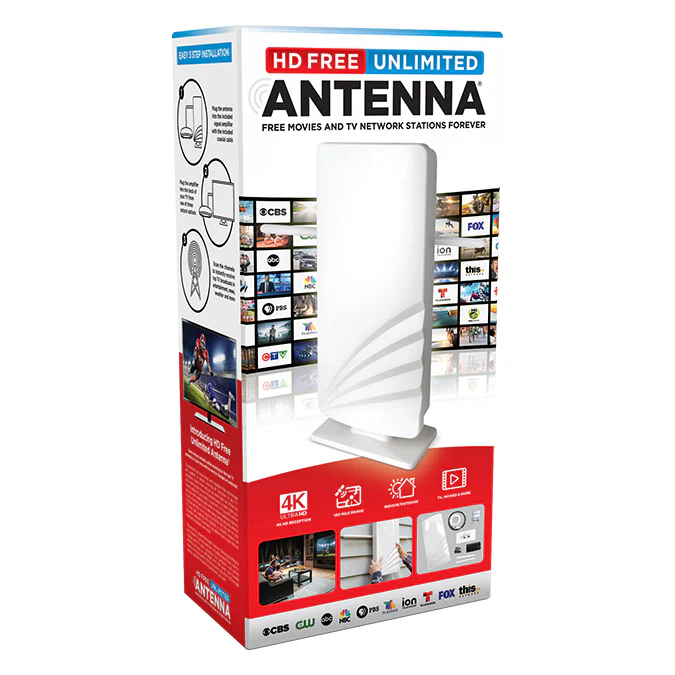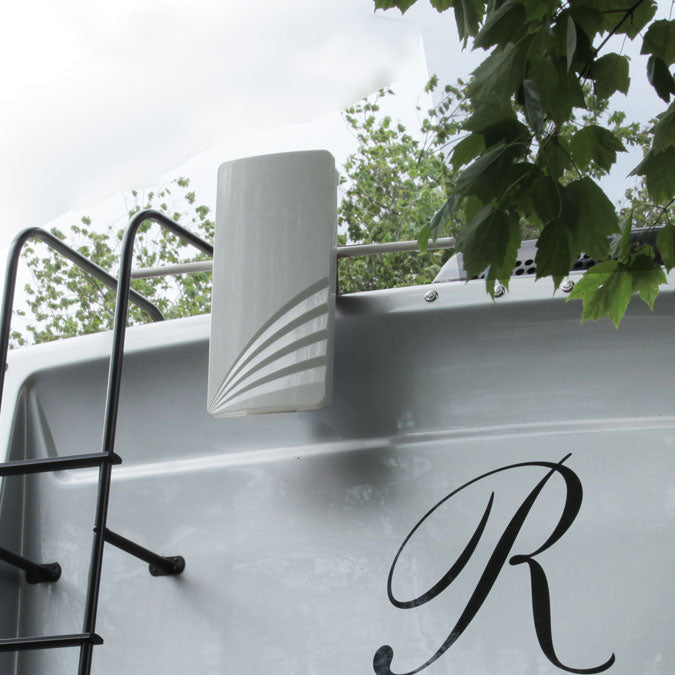Discovering the Advantages of HD Free Antennas

HD free antennas have become popular among households looking for high-quality TV viewing without the burden of monthly bills. These antennas allow users to capture local broadcasts in high definition, ensuring clear and uninterrupted viewing of their favorite shows, news, sports, and more. Unlike cable or satellite subscriptions, HD free antennas provide access to a variety of channels at no additional cost after the initial setup, making it an appealing choice for budget-conscious viewers.
How HD Free Antennas Work to Deliver Clear Signals
HD free antennas receive over-the-air (OTA) signals broadcast by local television stations. These signals are sent through electromagnetic waves, which the antenna captures and translates into audio and visual output for your television. The channels are transmitted in high definition, giving you clear picture quality similar to what you would experience through paid cable services. This technology works by leveraging nearby broadcast towers, allowing for excellent signal reception without the need for costly equipment.
Choosing the Right HD Free Antenna for Your Location
Location plays a significant role in determining the best HD free antenna for your home. Urban areas typically have access to more broadcast towers, making indoor antennas a viable option. Rural areas, however, may require outdoor or more powerful antennas to capture signals from distant towers. The placement and type of antenna can greatly impact the number of channels you receive, so it’s essential to select an antenna tailored to your location and broadcasting environment.
Indoor vs. Outdoor HD Free Antennas: Which is Best?
Indoor and outdoor HD free antennas each offer unique advantages. Indoor antennas are compact, easy to install, and suitable for urban areas where signals are strong. Outdoor antennas, on the other hand, are more powerful and can capture signals from greater distances, making them ideal for suburban and rural areas. Your choice will depend on your location, preferred channels, and whether you're willing to install an antenna on your roof or in your attic for better reception.
Installation Tips for Optimal HD Antenna Performance
Installing your HD free antenna correctly is essential for clear signal reception. Begin by testing different locations in your home to determine where the signal strength is strongest. Windows and higher elevations often yield better results. For outdoor antennas, ensure they are securely mounted, and pointed in the direction of the nearest broadcast tower. Experimenting with placement can help you find the best spot to maximize channel availability and clarity.
The Channels You Can Expect with an HD Free Antenna
An HD free antenna provides access to local network channels such as ABC, CBS, NBC, FOX, and PBS. Many local stations also offer secondary channels that broadcast additional content, like movies, retro shows, and news networks. Depending on your area, you may also receive specialty channels with content focused on weather, lifestyle, sports, and children’s programming, giving you a range of options without monthly fees.
Common Misconceptions About HD Free Antennas
One common misconception is that HD free antennas offer limited channels and poor quality. However, antennas today are capable of delivering full HD broadcasts, matching or exceeding the quality of cable and satellite services. Another myth is that antennas only work in cities, but with the right model and placement, they can capture signals even in rural areas. Antennas can offer a high-quality TV experience with a wide variety of channels.
Maximizing Signal Strength for Clear Reception
To achieve optimal signal strength, ensure your antenna is positioned in an area with minimal obstructions. Materials like concrete and metal can interfere with signal reception, so placing the antenna near a window or higher up in your home can help. If signal issues persist, consider using a signal amplifier or repositioning the antenna. Regularly checking the positioning and adjusting as needed can enhance your viewing experience.
HD Free Antennas as an Alternative to Cable and Satellite
HD free antennas offer an excellent alternative to costly cable or satellite subscriptions. By capturing over-the-air signals, these antennas eliminate monthly fees while providing high-definition access to popular networks. This option allows viewers to enjoy essential programming, including news, sports, and entertainment, without sacrificing quality or selection, making it a valuable investment for budget-conscious households.
Understanding the Role of Frequency Bands in HD Antennas
HD antennas operate on two main frequency bands: UHF (Ultra High Frequency) and VHF (Very High Frequency). Some channels are broadcast on UHF, while others use VHF. Modern HD free antennas are often designed to capture both frequencies, ensuring that viewers can access a full range of local channels. Understanding these frequency bands can help you choose an antenna that offers comprehensive channel coverage.
Comparing Amplified and Non-Amplified HD Antennas
Amplified HD free antennas come with built-in signal boosters that help capture distant signals and improve reception in areas with weak signals. Non-amplified antennas are typically suitable for areas with strong signal strength, as they do not require additional boosting. Depending on your distance from the nearest broadcast towers, an amplified antenna may be necessary to receive a wider array of channels and maintain consistent viewing quality.
The Future of Over-the-Air Broadcasting and HD Antennas
With advancements in broadcasting technology, the future of over-the-air television is promising. Many stations are transitioning to ATSC 3.0, the next-generation broadcast standard, which promises better image quality, stronger signals, and interactive features. This means that HD free antennas will continue to improve in terms of performance and functionality, keeping pace with the evolving demands of television viewers.
Troubleshooting Common HD Free Antenna Issues
If you encounter issues such as pixelation, channel loss, or poor signal quality, there are a few troubleshooting steps you can take. Begin by checking the antenna’s position and ensuring it faces the broadcast towers. Verify that there are no major obstructions nearby, such as large trees or buildings. If you continue to experience problems, a signal amplifier or a higher-gain antenna may resolve reception issues, especially in areas with weak signals.
How Much Can You Save with an HD Free Antenna?
The savings from an HD free antenna can be significant over time, especially when compared to cable or satellite bills. Many households save hundreds of dollars annually by switching to antenna-based television. Once the initial purchase and installation costs are covered, there are no ongoing expenses, allowing you to enjoy free, high-definition television for years to come.
Can an HD Free Antenna Be Used in Any Region?
HD free antennas are versatile and can be used in a variety of regions, though the availability and quality of channels may vary based on geographic location. Urban and suburban areas with close proximity to broadcast towers typically receive a greater range of channels, while rural areas may require outdoor or amplified antennas to capture distant signals. Researching your location’s broadcast coverage can provide a clearer understanding of expected channel availability.
Are HD Free Antennas Compatible with All TVs?
Most modern TVs are compatible with HD free antennas, provided they have a built-in tuner. If your TV is an older model without a tuner, you may need an external digital converter box to use the antenna. Checking your television’s specifications can help determine compatibility and ensure a smooth setup for receiving over-the-air broadcasts.
- Art
- Causes
- Crafts
- Dance
- Drinks
- Film
- Fitness
- Food
- Juegos
- Gardening
- Health
- Inicio
- Literature
- Music
- Networking
- Otro
- Party
- Religion
- Shopping
- Sports
- Theater
- Wellness


